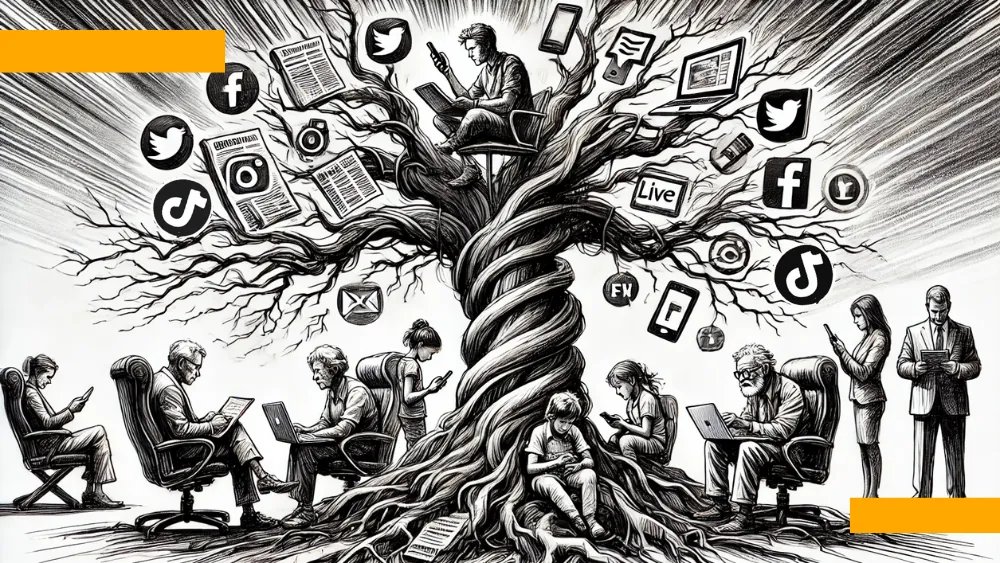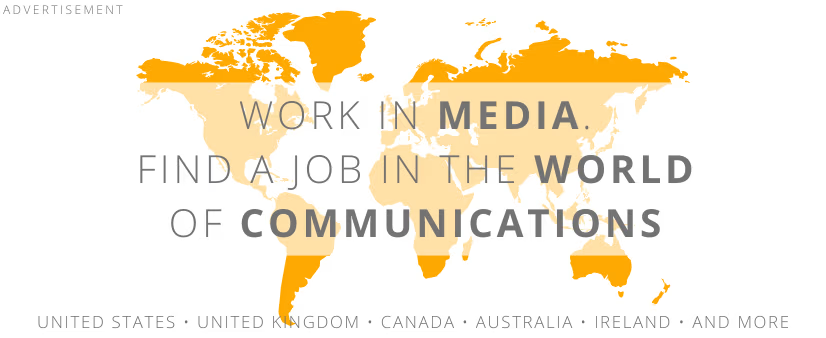 illustration: DALL-E
illustration: DALL-E"The 2025 Social Media Report" by Shauna Moran and Tyler Ashe from GlobalWebIndex is shedding light on how our online behavior is evolving. The conclusion? Users are tired, but they’re not quitting social media. They want more authenticity and less posing. And brands? Brands must adapt to a new reality - one shaped by artificial intelligence, micro-communities, and a culture of "imperfection."
Time for “Less, But Better”
More and more people are saying they’re cutting back on time spent on social media. And while this doesn’t mean a mass exodus, the trend is clear. In 2024, 31% of users said they had reduced their social media use. In comparison - only 23% said the same in 2020.
| Year | Percentage of Users Reducing Social Media Use |
|---|---|
| 2020 | 23% |
| 2022 | 28% |
| 2024 | 31% |
What does this lead to? Platforms like Instagram and TikTok are no longer just places for self-presentation. Users are now looking for valuable content, information, and even... peace. They’re tired of seeing yet another vacation photo in the “everything’s perfect” style. They prefer people they can relate to.
Authenticity and Everyday Life: A New Aesthetic Direction
According to the GWI report, one of the strongest trends in 2025 is moving away from perfectionism. “Raw,” spontaneous, and authentic content is now more engaging than carefully produced videos.
- 42% of users aged 16–24 say they value “relatable content” more than “aesthetic content.”
- 35% of respondents prefer following people like themselves rather than celebrities or influencers.
- On TikTok, “day in the life” videos - simple, unpolished, but honest - are gaining popularity.
There’s also a subtle frustration. Users feel pressure to create “pretty” content, even though they’re increasingly uninterested in doing so. Brands need to understand that professional campaigns don’t always win over a spontaneously recorded video at home.
Micro-Communities and New Gathering Spaces
The The 2025 Social Media Report clearly highlights the rising importance of closed and niche communities. In an overstimulated world, users are turning to smaller groups - where they feel safe, can be themselves, and talk without judgment.
- Reddit and Discord are gaining popularity among younger generations.
- 27% of internet users under 34 say they value “compact communities with shared interests.”
- Facebook Groups and Telegram channels are becoming quiet leaders in engagement.
Example? Beauty brand Glossier dropped big ad campaigns in favor of moderated user groups. That’s where the most valuable insights are born and new ideas are tested. In this transformation, communities are no longer just audiences. They become co-creators, testers, and brand ambassadors.
Most Used Social Media Platforms by Generation
| Rank | Gen Z (16–27) | Millennials (28–41) | Gen X (42–60) | Baby Boomers (61–78) |
|---|---|---|---|---|
| 1 | YouTube | |||
| 2 | YouTube | YouTube | ||
| 3 | YouTube | |||
| 4 | TikTok | TikTok | TikTok | TikTok |
| 5 | x.com | x.com | x.com | x.com |
| Most Distinctive App | Snapchat | Threads | Kuaishou | Nextdoor |
Artificial Intelligence - Partner or Rival?
You can’t talk about social media today without mentioning AI. According to the GWI report:
- 39% of users have used AI tools to create content on social media.
- 48% of millennials believe AI helps them be more creative.
- The most commonly used tools are chatbots for post creation, photo editors, and music generators.
This trend comes with challenges. On one hand, AI democratizes creation - anyone can now create, edit, and publish like a pro. On the other hand, questions about authenticity and originality arise. Will audiences want to consume “machine-made” content?
It’s also worth noting that AI is changing how platforms work. Algorithms are getting more advanced, able not only to suggest content but to predict user needs.
Influencers Face a Trust Crisis
Although the influencer marketing industry is still growing, its landscape is shifting fast. In 2025, audiences are much more sensitive to fakeness and artificiality.
Here’s the new list of expectations for online creators:
- Transparency in collaborations and sponsored content.
- Real stories instead of polished success narratives.
- The ability to engage in dialogue with followers.
Interestingly, the report says 41% of people aged 25–34 trust micro-creators more than stars with millions of followers. This shift means that for brands, reach is no longer everything - credibility matters most.
In this context, the rise of “creator economy 2.0” is key - a model based on long-term collaboration and relationships, not just one-off product promotions.
The full GWI report "The 2025 Social Media Report" is available at https://www.gwi.com/reports/social-media-trends/
COMMERCIAL BREAK
New articles in section Media industry
Advertising market 2025. Poland, Europe and the World
Marcin Grządka
The global advertising market is growing by 8.8% in 2025 and will reach a value of 1.14 trillion dollars. The industry result in Europe records slightly lower dynamics, at the level of 5.8%. In this comparison, Poland performs clearly above the average. We will record an increase of 8.9% this year and a value of 18.56 billion PLN - estimates WPP Media in the annual report "This Year Next Year".
The print media market 2025. Three global trends
Krzysztof Fiedorek
The market value is 359.53 billion dollars, yet the erosion is visible to the naked eye. The decline for newspapers will amount to -2.3 percent. Despite this, print retains strength: it generates 76 percent of subscription revenues and enjoys 82 percent consumer trust. The future of the industry is defined by hybrid strategies and niche specialization.
Journalism in the age of AI. Why people prefer humans over machines
Krzysztof Fiedorek
Only 12% of people accept news created solely by AI, while 62% prefer those written by humans. At the same time, only 19% notice labels indicating the use of artificial intelligence, while younger audiences ask AI to explain the content to them. These are the findings of the Reuters Institute report on artificial intelligence in media.
See articles on a similar topic:
Virtual Influencers Perceived as More Authentic than Real Ones
Agnieszka Kliks-Pudlik
Virtual influencers are fictional, generated characters that imitate the appearance and behaviour of real people. They have millions of followers. They are perceived by Gen-Alpha as even more authentic than real people, which creates many challenges, says Dr. Ada Florentyna Pawlak.
New Technologies in Journalism. PressInstitute Study
BARD
Nearly 39% of journalists use their smartphone or tablet camera to record videos, while over 26% use the built-in camera to take photos that they later publish, according to the "Journalists and New Technologies" study by PressInstitute.
Disinformation and Fake News. Experts Discuss Challenges for Journalists
RINF
The pandemic, followed by the war in Ukraine, triggered a massive wave of disinformation in media and social channels. Experts at the Impact’22 Congress in Poznań and the European Economic Congress in Katowice discussed effective strategies to combat disinformation.
Radio, Streaming, and Podcasts. Total Audio 2024 Report about Poland
Krzysztof Fiedorek
Audio content is a daily companion for Poles. According to the Total Audio 2024 study conducted by Adres:Media on behalf of the Radio Research Committee, as many as 90% of respondents listen to audio content at least once a week, and 80% do so daily. The average listening time is nearly five hours per day.






























